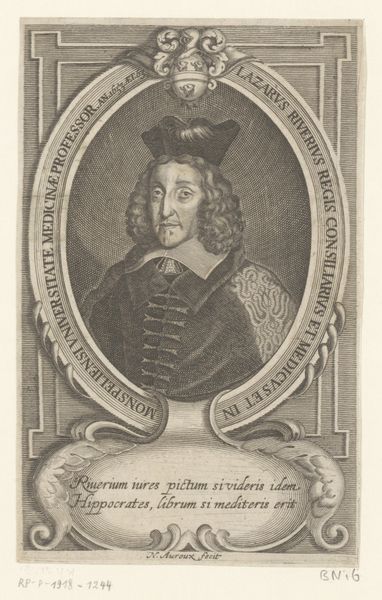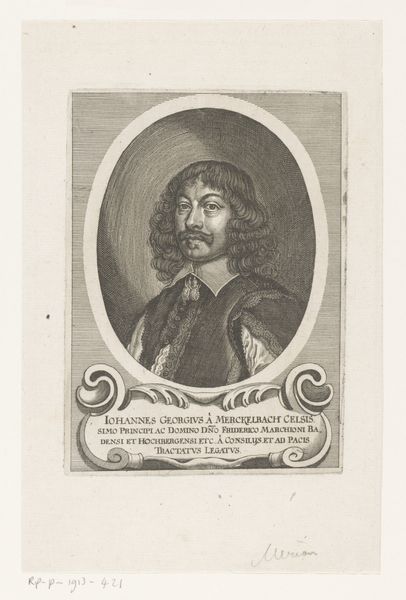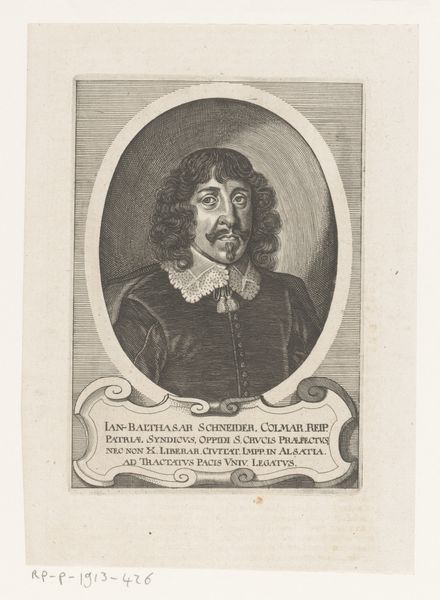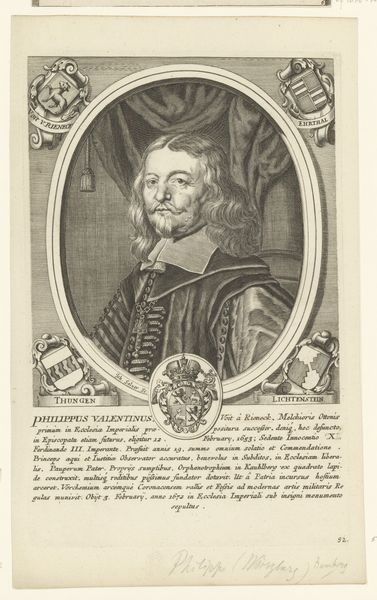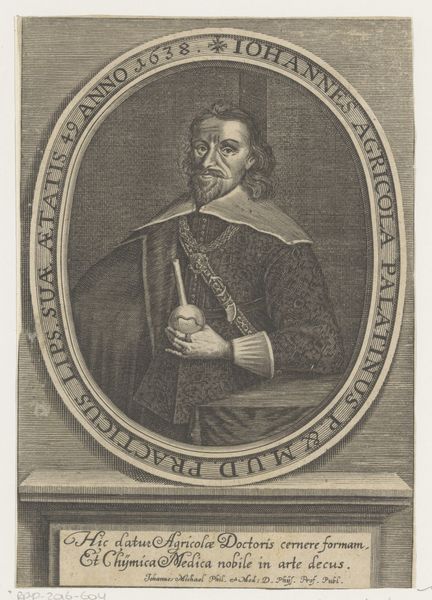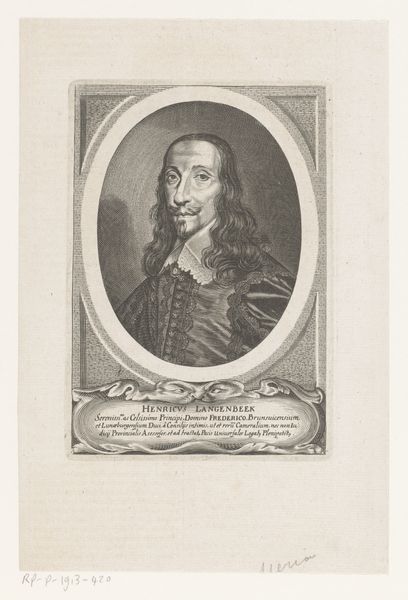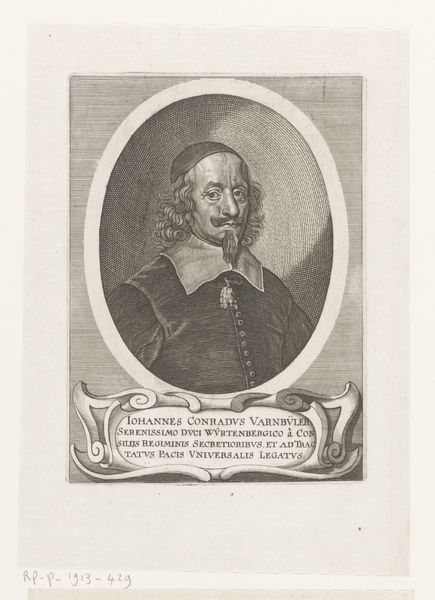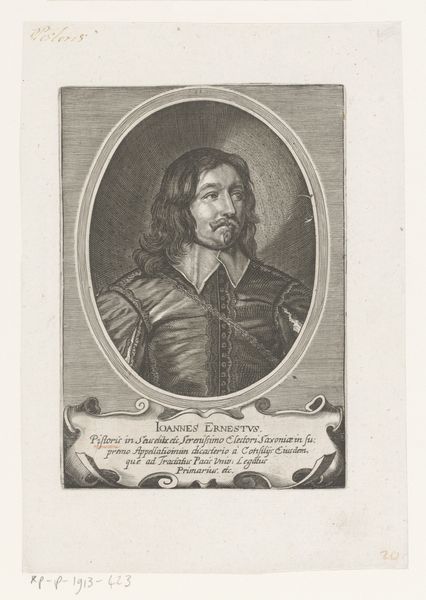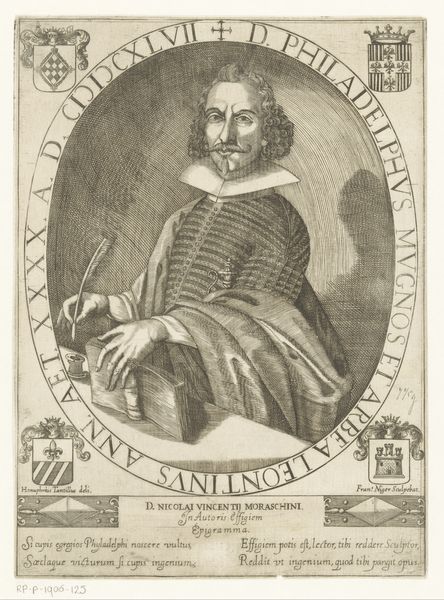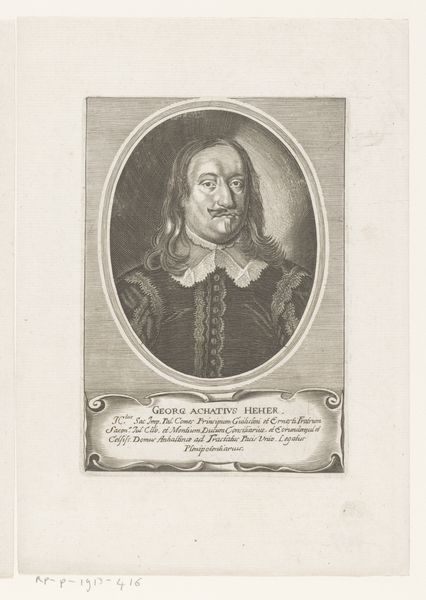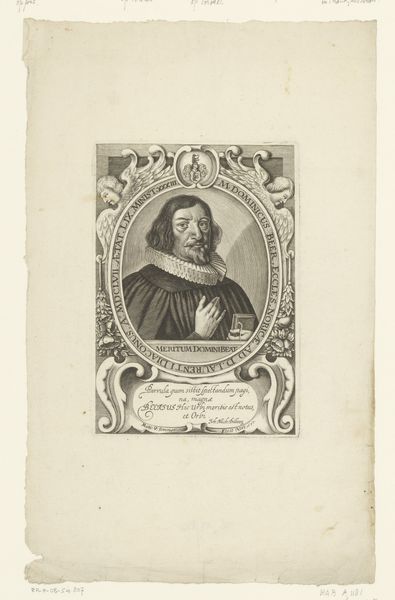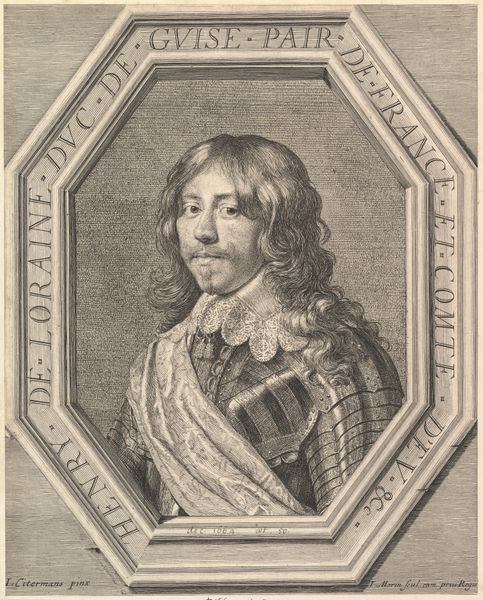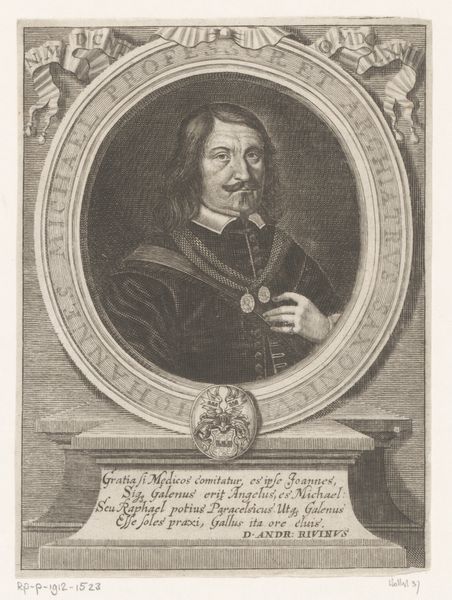
engraving
#
portrait
#
baroque
#
dutch-golden-age
#
engraving
Dimensions: height 158 mm, width 130 mm
Copyright: Rijks Museum: Open Domain
This portrait of Martinus Kipsch Röblinga, created in 1671 by Johann-Baptist Paravicini, presents us with an image framed by symbols of status and erudition. Encircling Röblinga is an inscription, a Latin phrase, that speaks to his identity. The portrait, with its calculated gaze and controlled demeanor, is reminiscent of the Roman "imago clipeata", a symbol of authority that extends back to antiquity, where ancestral portraits were carried in processions as a sign of lineage and power. But here, it is softened, framed in baroque flourishes of swirling text. This transition is fascinating, because it betrays a shift in how power is viewed. Consider how the very act of portraiture, evolving from imperial commissions to bourgeois aspirations, reshapes the concept of identity. The psychological weight of these images cannot be understated; they mirror the collective desire to capture, understand, and perhaps even control the relentless march of time. The visual language, in its cyclical progression, reveals our timeless quest for recognition and remembrance.
Comments
No comments
Be the first to comment and join the conversation on the ultimate creative platform.
